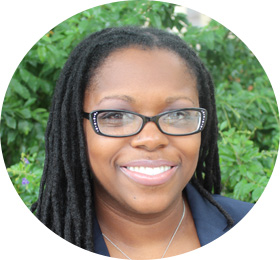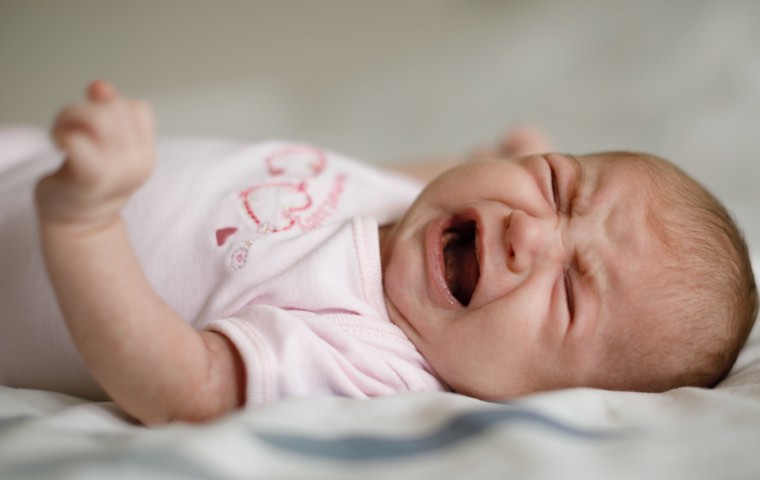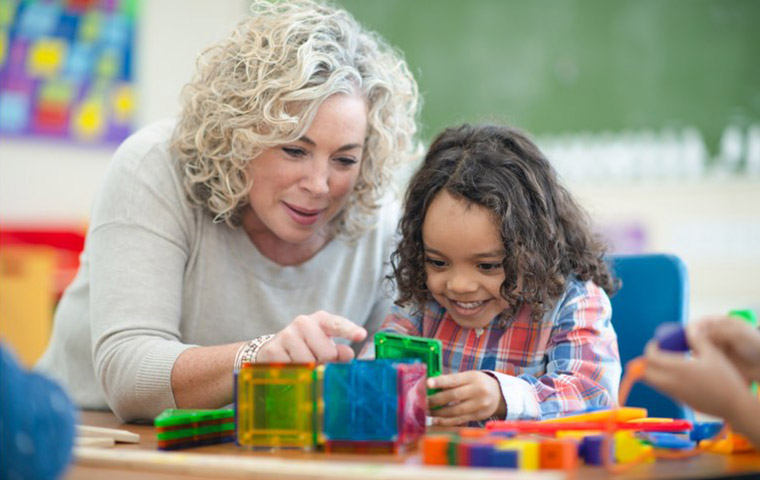As a pediatrician, I believe a focus on prevention and parent education is important. It's my job to ensure parents understand the importance of following safe sleep practices and how they can help reduce the risks of sudden unexpected infant death (SUID) from occurring. Below are several common questions that my patients have asked me over the years. I hope this information will help as you navigate the world of parenthood and that it will give you and your baby more peaceful nights of sleep.
I've heard of SIDS and SUID. What is the difference?
Answer: SUID stands for Sudden Unexpected Infant Death and is the term used to describe when a baby who is less than one-year old dies unexpectedly with no obvious reason. When no cause can be pinpointed, even after a full investigation and autopsy, but the infant was found unresponsive after being laid down to sleep, the death is considered a case of Sudden Infant Death Syndrome or SIDS. SIDS is one type of SUID.
Each year, there are about 3,600 SUIDs in the United States.
My mom and grandmother told me it's OK for my daughter to sleep on her tummy, but the hospital nurse told me to put her on her back in an empty crib. Why is sleeping on her back considered to be safe sleep for babies?
Over the years, we have learned that babies are safest when they sleep on their back on a firm surface, such as a mattress in a crib with a tight-fitting bottom sheet. Often parents are afraid that their baby will choke while sleeping on their back. Actually, babies are meant to sleep on their back. A baby's airway anatomy and gag reflex actually prevent her (or him) from choking. The National Institute of Health (NIH) has recommended back sleeping to promote safe sleep for babies.
I've heard that I'm not supposed to sleep with my baby. But this seems crazy because when my baby sleeps with me I think I can protect her. I can easily check on her throughout the night and will know if she stops breathing. How can I be sure that she is safe if she's sleeping in a crib?
So, I suggest that you share a room with your baby instead of sharing a bed. It is recommended that you share a room with your infant until she is at least six months old, and a year is even better. Once she moves into her own room you can use a baby monitor to help you feel more confident. The NIH says that sharing a room can reduce a baby's risk of an unexplained death by up to 50%.
Never co-sleep with your baby. This includes sleeping in a bed, sofa, floor, chair, or any other place you might fall asleep.
I have bumper covers for my baby's crib because I don't want her to hit her head while sleeping. Why do doctors recommend not using them?
It's really important that cribs are free of bumpers and any other bedding or toys. There is no evidence that bumper pads prevent injuries. However, there is a potential risk of suffocation, strangulation, or entrapment when you have bumpers on the crib or items in the crib. So, safe sleep for babies means no bumpers.
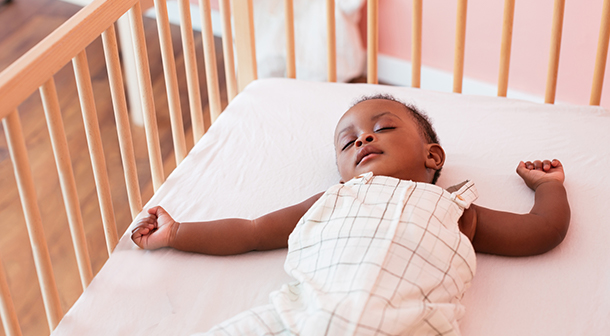
My daughter will not fall asleep without her "lovey" or stuffed animal. Why is not having it in her crib such a big deal when my baby sleeps better with one?
As mentioned above, babies should sleep alone in their crib. Parents should follow the ABCs of Safe Sleep: Alone, on their Back, in a Crib, and in cool and Smoke-free environment. All of these steps help protect your baby and reduce the risk of SUID. Soft surfaces or objects, like a lovey, in the crib can pose a suffocation risk in the safe sleep space/crib. It's OK to allow your baby to have a pacifier, but skip the kind that has an attached stuffed animal.
Remember, babies do not need a stuffed animal to help them sleep. If your baby is used to sleeping with one now, remember that she will quickly adjust without one.
When are babies more at risk for SIDS?
Research shows that the greatest risk period is when a baby is two to four months old. The risk starts decreasing after six months. But we know that SIDS can occur for any infant under the age of one year.
My baby sleeps in her swing. I've heard this is not considered a safe sleep area for babies. Is that true?
We know that babies sleep in lots of places outside of the crib. Babies who fall asleep in car safety seats, strollers, swings, infant carriers, and infant slings should be moved to a safe sleep surface as soon as you can move them. Yes, your baby may wake up, but it's better to be safe and try getting them used to sleeping in their crib instead of these other places.
When a baby is in a car seat, swing, or carrier, her neck will be in a flexed position. You'll notice that your baby's chin is touching her chest, which can obstruct breathing during sleep and lead to asphyxiation or even death. This is due to their weak neck muscles and why they need to be on a flat surface - so their airway can remain open.
I have friends who let their babies sleep in a boppy. Is that okay?
You should only use these types of products when your baby is awake. You never want to put one in your baby's crib or leave your baby unsupervised in one. These are great for awake time but not baby sleep time as they could cause suffocation.
I've heard I shouldn't cover my baby with a blanket but her nursery is so cold. How can I keep her warm and safe?
For so many parents it feels odd to put their baby in an empty crib, especially during the winter months when it's colder outside and inside. But overheating can be a factor when a baby dies suddenly and unexpectedly. It's best to keep the room temperature between 68 and 72 degrees. A cooler room will help create a safe sleep environment for your baby. You can always dress your baby in a warmer onesie or a sleep sack if the room is much cooler than 68 degrees. A great rule of thumb is that your baby can be dressed in one layer more than what you are wearing to sleep in. It's important to not overdress your baby!
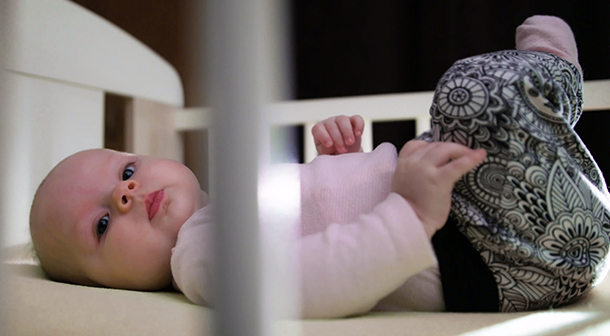
How long should my baby sleep in my room?
It's best to room share with your baby until she is at least six months old. If possible, it's even better to keep her in your room for the first year, but make sure she is in her own newborn bassinet or crib. Room sharing allows you to be close to your baby for easy monitoring and breastfeeding, and it's a great way to create a safe sleep space.
How long should we keep our baby in a newborn bassinet?
Most babies stay in newborn bassinets until they are three to six months old. The key is to make sure your baby fits in the bassinet and isn't bumping into the sides. All newborn bassinets have a weight limit, so make sure you follow the guidelines for your particular product. Most babies move out of a bassinet when they weigh between 10 and 15 pounds. If your baby is able to start rolling over on her tummy, you should consider moving her to a crib.
Need parenting help now?
The Texas Parent Helpline is available 24/7.
- Call 833-680-0611
- Chat with us
- Text 833-680-0611
I have heard mixed information about swaddling. Is swaddling considered to be safe sleep for babies?
Swaddling should only be used when a baby sleeps on her back and is not able to roll over, which is usually around eight weeks. It's also important to make sure your baby is correctly swaddled. And if she doesn't like to be swaddled, it is OK. You might consider using a sleep sack for naptime and bedtime. It's a great way to provide the comfort of a swaddle but is still safe after your little one is able to roll over.
I have heard that secondhand smoke can be dangerous for a baby and possibly even increase their risk for SUID. Is that true?
Smoking and secondhand smoke are not safe for anyone, including babies. Studies have shown that secondhand smoke can present a greater risk for SUID. Smoke-free environments are safest.

My baby sleeps with a pacifier. Is this OK?
Yes. Pacifiers may help protect against SUID. If you are breastfeeding, it is best to let your baby get the hang of nursing before introducing a pacifier. This usually happens when the baby is three to four weeks old. It's important to make sure you only give your baby a pacifier without any attachments. Cords or baby toys on the end of pacifiers could be a choking hazard.
Some babies don't care for pacifiers, and that's OK. You need to learn what is right for your baby. If your little one does use a pacifier and it falls out of her mouth while sleeping, be sure to leave the pacifier out and don't try to put it back in her mouth.
I worry that my baby is getting too hot in her crib. What should the room temperature be and is it OK to keep a fan on?
The ideal temperature for a baby's room is between 68 and 72 degrees, and it's OK to have a fan on in the room. If you keep your home warmer than this, just make sure to not overdress your baby and keep the air moving in the room where your baby is sleeping. It's best to put your infant in one more layer than what you think might be comfortable. You can place your baby in a onesie, sleep sack, or lightweight swaddle in warmer months. In colder months, opt for a long-sleeved onesie or slightly heavier sleep sack.


